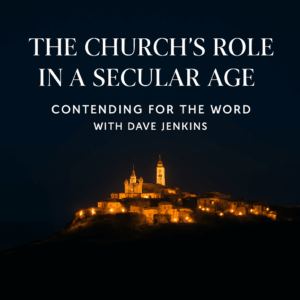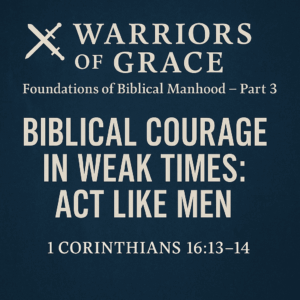⏱️ Estimated Reading Time: 13 min read
 Authenticity is a buzz word. Do a search for authentic living and you’ll find thousands of articles explaining how to do it—from secular, eastern, western, traditional, progressive, and missional perspectives. Each of these groups offers a different liturgy (religious or not) and also a different vision for what living authentic looks like. Christians must not only know right doctrine, but must know right liturgy and right story and also the heterodox liturgies and stories to rightly make, mature, and multiply disciples. Here’s a few examples of heterodox liturgies and stories prevalent today.
Authenticity is a buzz word. Do a search for authentic living and you’ll find thousands of articles explaining how to do it—from secular, eastern, western, traditional, progressive, and missional perspectives. Each of these groups offers a different liturgy (religious or not) and also a different vision for what living authentic looks like. Christians must not only know right doctrine, but must know right liturgy and right story and also the heterodox liturgies and stories to rightly make, mature, and multiply disciples. Here’s a few examples of heterodox liturgies and stories prevalent today.
Within the LGBTQ (Lesbian, Gay, Bi-sexual, Transgendered, & Queer) community, living authentic to your true self is a crucial element to their liturgy. It’s a crucial plot point and character maturation in the story of living authentically as a LGBTQ person—with all that includes. There’s heavy importance in coming out and also negative (mostly) implications to outing someone who’s not ready. As a Christian, it’s interesting that many Christians who struggle with same sex attraction and speak out about it openly, but aren’t out and proud are treated as Uncle Tom’s of the LGBTQ community. They’ve bucked the liturgy and are excommunicated from the community because of it.
One more example. recently the Supreme Court ruled in favor of Hobby Lobby and in several venues, social media platforms, and blogs I saw people who were arguing against the ruling. Many of these arguments centered around the perceived restriction of authentic living by an employer. “Who is my employer to tell me how I should live in such intimate matters?” Or “Women should be able to have sex without fearing that it will negatively impact their lifestyle.” Or “If my employer doesn’t provide me all options of contraceptive, then I don’t have access to contraceptives and that impedes my freedom.” There’s an implied point that authentic living as a modern person includes freedom of sex without responsibility and repercussion. Authentic living is cooked down to sexual freedom. In this liturgy, freedom of sexual exploration and exploitations without consequence is the truly authentic vision of the good life.
There’s something strong and wrong in these liturgies and stories. Even when irrational, even when proven to have negative consequences, people embrace these lifestyles and argue for them because the liturgy has engaged their hearts. There’s truth, in some way, that we are meant to live an authentic life—although Christians would argue this must be tied to Jesus Christ. But authentic living as defined by our current society would be chaos. A society ruled by the passions of what makes me feel authentic is dangerous because it’s subjective. There’s no foundation for right and wrong—only what I perceive as authentic to me as an individual. And who are you to tell me otherwise?
Christians cannot combat these affective liturgies and stories with rational arguments alone. We must engage the hearts which once won will win the head. James K. A. Smith in Desiring the Kingdom says, “Lived worship is the fount from which a worldview springs, rather than being the expression or application of some cognitive set of beliefs already in place” (136). Think about it. How many times have you heard, “Christians are such hypocrites because they believe x, but live this way.” In most cases, what we love shows by how we act and makes more of an initial impression on people than what we say we believe.
The early Christological debates of the church underscore the truth that our hearts guide our head. The ancient church had always worshiped a Triune God. They had always worshiped Father, Son, and Spirit as “one God in Trinity, and Trinity in Unity; Neither confounding the persons, nor dividing the substance . . . But the Godhead of the Father, of the Son, and of the Holy Spirit is all one, the glory equal, the majesty co-eternal” (The Athanasian Creed). But the doctrinal clarity wasn’t there. It took centuries to formulate clear, succinct statements of faith for what the church had been practicing clearly and succinctly, for what had already grabbed their hearts in the liturgy and worship of the church. The affective worship of the church liturgy played a crucial role when came time to decipher orthodoxy from heresy.
What we must understand today is not only that authentic living is living in Christ (it absolutely is), but that we must make that truth beautiful—it must stab our hearts. We must tell it in stories that affect the heart. We must practice it in our liturgies (ecclesiastical and daily). Smith is helpful again on this point.
“While secular liturgies are after our hearts through our bodies, the church thinks it only has to get into our heads. While Victoria’s Secret is fanning a flame in our kardia, the church is trucking water to our minds. While secular liturgies are enticing us with affective images of a good life, the church is trying to convince us otherwise by depositing ideas” (127).
A few years back I was dialoguing with a young man who had rejected his parent’s Christianity and practicing the liturgy of the new atheism. During one of these conversations, he says: “My parents use to tell me that Christianity made things move like a car. If I didn’t continue to live rightly my ‘check engine light’ would come on and life would break down. Things have been better than ever since I’ve embraced atheism.” Among many problems, the parents were laying siege to the head, when the new atheism liturgy was conquering his heart. The new atheists were hard selling a picture of the good life to his heart—one which his parent’s rationalistic approach to Christianity couldn’t match.
I argued in a recent article that we must eat stories for life as Christian disciples. Part of that argument rests on the way God presents the gospel. Israel is enslaved in Egypt. She’s been in bondage for nearing 400 years. God has been mostly silently. Israel is disgruntled, angry, and skeptical. She’s bought whole scale the liturgy of Egypt. The Egyptians have sold Israel a defunct and moldy vision of the good life. Even after God redeems Israel, they occasionally murmur, “In Egypt, we had leeks, onions, and garlic.” That’s a head nod to the implicit liturgy of Egypt. It’s like saying, “Those were the good life. The slavery was a small price to pay for those.”
How does God redeem Israel? God comes in and gives them a proper lesson on doctrine, right? He swoops in and gives them the ten commandments. He says obey and things will work out for you. Not at all. He steps into their slavery and decisively redeems them. And he doesn’t just snap his fingers and have them appear in the Promised Land. He redeems them in a way that demonstrates that the Egyptian liturgy and its deities were a pile of steaming poop. He acts out a story that has kept the attention of young kids, adults, and everyone in between for millennia. We watch it go down slack-jawed. “He did what?”
He goes for Israel’s heart before he ever goes for their heads. And when God finally goes for their heads, when he finally gives the ten commandments and the rest of the law, he repeatedly says something like: “You shall remember that you were a slave in the land of Egypt, and the Lord your God redeemed you; therefore I command you this today” (Deut. 15:15). Or hear Moses, when he reminds parents to rehearse this story to their kids so they don’t forget that God acted for his people (Deut. 6:1-2 see also Deut. 15:15):
1 “Now this is the commandment—the statutes and the rules—that the Lord your God commanded me to teach you, that you may do them in the land to which you are going over, to possess it, 2 that you may fear the Lord your God, you and your son and your son’s son, by keeping all his statutes and his commandments, which I command you, all the days of your life, and that your days may be long. 3 Hear therefore, O Israel, and be careful to do them, that it may go well with you, and that you may multiply greatly, as the Lord, the God of your fathers, has promised you, in a land flowing with milk and honey.
4 “Hear, O Israel: The Lord our God, the Lord is one. 5 You shall love the Lord your God with all your heart and with all your soul and with all your might. 6 And these words that I command you today shall be on your heart. 7 You shall teach them diligently to your children, and shall talk of them when you sit in your house, and when you walk by the way, and when you lie down, and when you rise. 8 You shall bind them as a sign on your hand, and they shall be as frontlets between your eyes. 9 You shall write them on the doorposts of your house and on your gates.
10 “And when the Lord your God brings you into the land that he swore to your fathers, to Abraham, to Isaac, and to Jacob, to give you—with great and good cities that you did not build, 11 and houses full of all good things that you did not fill, and cisterns that you did not dig, and vineyards and olive trees that you did not plant—and when you eat and are full, 12 then take care lest you forget the Lord, who brought you out of the land of Egypt, out of the house of slavery.
He starts off with their affections. “I’ve acted for you. I’ve redeemed you. Now love the Lord your God with all your heart”—which is immediately followed with “And these words that I command you today shall be on your heart” (v. 6). Or paraphrased: Love me because I’ve loved you and placed that love on your hearts. Notice after this affective start, how he couches the teaching in tangible, earthy terms. God is painting a picture of the good life. He’s saying, “Teach your kids what I did—when you sit, lie down, or eat in the house (that I gave you freely). And when you get into the land—with its cities, homes, food, clean drinking water, wine, and olive oil (that I gave you freely)—don’t forget I redeemed you out of Egypt.” Love me because I’ve loved you and placed that love on your hearts.
That’s a tangible picture of what a Godward vision of the good life looks like. Even after redeeming them, even while laying hold of their mind, he’s conquering their heart, their affections.
Paul follows this pattern in his letters. Take note of Romans 6. Paul is arguing for authentic living in Christ—against the crummy liturgy of “the body of sin” (v. 6). He paints a picture of the Godward good life by drawing on imagery of death, burial, and resurrection and contrasting that with the liturgy of slavery under sin and the liturgy of grace in Christ. In The Contours of Pauline Theology, Tom Holland draws these imagery out making them clear,
“As Moses, in the Exodus out of Egypt, took the people of God, for they were united with him through baptism, so Christ takes those who have been baptised into union with him from the realm of sin and death. This baptism into Christ took place in his exodus, in his coming out of the realm of Sin and death. It was a baptism into his death that all believers experienced, in the same historic moment” (151).
And in his commentary Romans: The Divine Marriage, Holland elaborates on Romans 6,
“Paul already dealt the possibility of an accusation of guilt being brought against the church for entering into another marriage relationship (Rom 6:7; 7:1-4). Satan will accuse Christ and the church that their union is not lawful. Should the call go out: “if anyone can show any just cause why they may not lawfully be joined together in matrimony, let him now declare it, or else hereafter for ever hold his peace” he is read to cry out: “She is mine. She is already married.” It is into this awful scene that Paul confidently declares: “It is God who justifies!” The judge of the whole earth will accept there is a charge to answer, and Paul states why this is so in the next verse [i.e., we have died with Christ and have risen to new life]. Of course, if Satan cannot persuade believers that it was unlawful for Christ to take his people as his bride then he will find other means to charge them. The answer to all charges, whatever they may be, is: “Christ has died and is rise! Hallelujah!” (287).
What we miss so often when reading Romans, a book that’s majestically logical and structured, is that there’s a story here that grips the heart and its affection. In Romans, Paul is saying, “You were in an abusive marriage where you were treated as a slave and prostitute (Rom. 6). God became man and came to rescue you (Rom. 3-4). He put the old body of sin to death so that the old marriage was once and for all dissolved by our death in Christ and we are now raised in Christ a spotless bride (Rom. 6). Remember you have everything you need in Christ—you are justified, sanctification, glorified, and elected in him (Roms. 8). Oh Christians, see what God has done for you. How then should we live? (Rom. 12-ff).”
That’s authentic living in Christ. It’s doctrinally rich, but it’s driven through the heart. It takes seriously the truth that the Church is a story-formed community. A community where the law is built around love—love your God and your neighbor. Where God has put the law on our hearts (Deut. 6:6). Where God is concerned first with who and what we love because he knows if we love right, we’ll live right. Right affections will lead to mature disciples that multiply other mature disciples. And a church that returns to its root as a community centered on who and what we love will easily answer the corrupt liturgies of our culture. So let’s not forget to fight for the hearts of people, while we teach them to obey everything the Lord commanded (Matt. 28:18-20). Let’s remember how we have been redeemed and our common story (“God became man and did what?!” That’s truly a masterpiece of affective storytelling). Doing these things will help us disciple better as we engage skeptics and believers. We’ve got a better story, so let’s tell it and let’s aim for the head through the heart.




